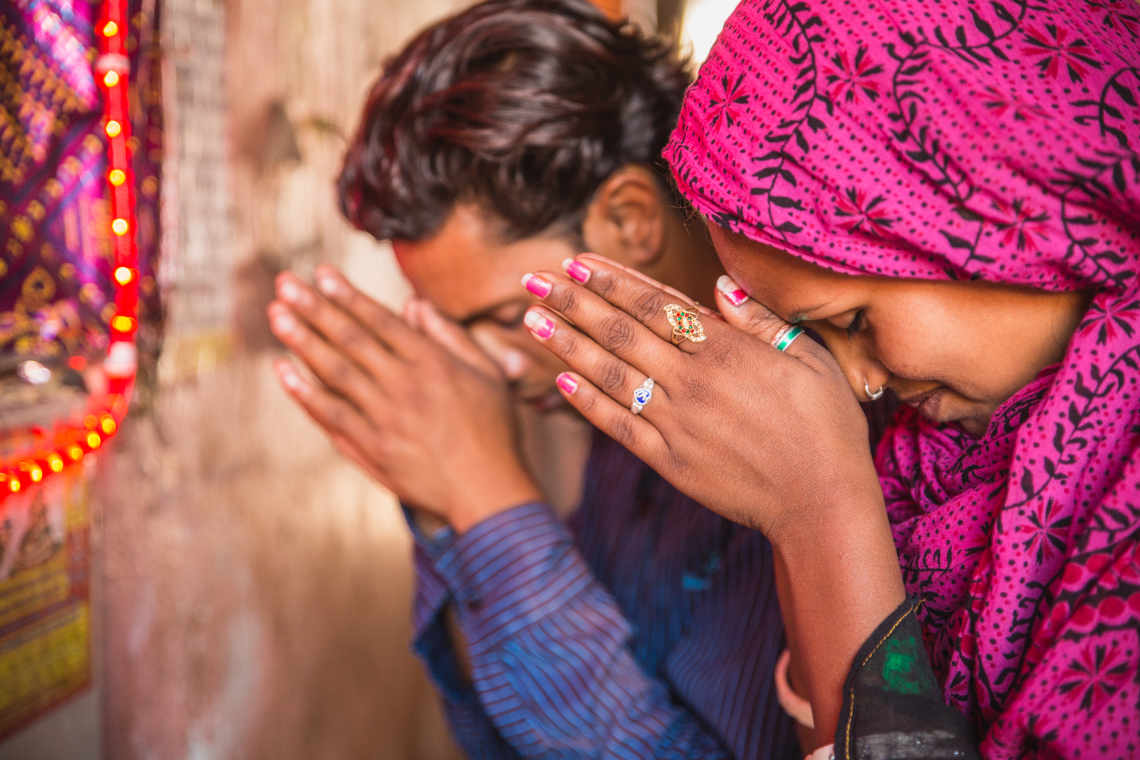Investigación de mercado de la religión hindú

Los individuos y las organizaciones establecen negocios con el objetivo principal de obtener ganancias. Realizar una investigación del mercado de la religión hindú les ayudará a comprender los límites y las condiciones de ese sector. Se realizan todas las consideraciones y esfuerzos para garantizar el máximo retorno de la inversión.
High demand usually translates to high profit, which positively reflects on the establishment’s image. It is clearly assumed that demand is linked to consumer response.
El comportamiento del consumidor siempre ha influido en la demanda de productos y servicios. Un factor de tal comportamiento tiene que ver con la religión del consumidor.
Religion is a noteworthy topic because of how it directly impacts the economy. Hinduism, for instance, has a great grasp on South Asia and certain South East Asian countries. Any interested investor must understand the relationship between the religion and its devotees before making any financial move.
¿Qué es la religión hindú?
Hinduism is the third-largest religion in the world, after Christianity and Islam. It has an estimated 1.3 billion devotees worldwide, mostly in South Asia and South East Asian countries. The followers of the religion are called Hindus.
The Hindus primarily worship three gods: Brahma, the creator, Vishnu, the preserver, and Shiva, the destroyer. However, there are around 33 gods and deities, usually categorized into different groups. Brahma, called by a variety of names, is the only supreme being among them.
The Hindu religion strongly believes in the doctrines of samsara and karma. Samsara means the continuous cycle of life, death, and reincarnation, while karma refers to the return of one’s actions, whether good or bad.
Lo que diferencia al hinduismo de otras religiones es que no tiene ninguna excomunión o conversión formal de la fe.
Países que practican el hinduismo
India, al ser uno de los países más poblados del mundo, está compuesta por una mayoría de hindúes. Casi mil millones de indios son devotos de la religión hindú, con un total de 801 TP3T de seguidores del hinduismo.
Nepal, Bangladesh, Indonesia, Pakistan, Sri Lanka, Malaysia, and Burma are other countries that practice the Hindu religion.
En cuanto a los países no asiáticos, Estados Unidos tiene alrededor de 1,8 millones de devotos hindúes y el Reino Unido tiene 800.000.
Industries Affected by the Hindu Religion
Hindu religious practices only affect industries within the area where they are primarily practiced. Since almost all Indians are Hindu, the whole country is affected. Focusing on Hindu Religion Market research will help industries gain insight.
La elección dietética es un factor importante en la religión hindú. A los hindúes se les enseña a ser lacto-vegetarianos, evitando la carne y los huevos. La mayoría practica limitar su dieta cárnica en lugar de abstenerse de comer carne por completo.
Hindus do not eat beef, as cows are considered sacred and represent Mother Nature. Animal lard is also not allowed, making it lucrative for vegetable-based oil to prosper. Interestingly, dairy products are allowed.
Consumption of alcohol is still up for debate. More conservative Hindus avoid consuming alcohol, believing it has a bad influence on the mind and body. On the other hand, liberal Hindus indulge in wine, especially at social gatherings. One of the companies that dominates the wine industry is Sula Vineyards. This wine manufacturer has 52% of the Indian market share.
Similar to alcohol, tobacco is not entirely prohibited. However, some Hindus believe that intoxication is a form of sin. It appears, though, that there is a significant demand for tobacco-based products. Indian Tobacco Company Limited, the leading cigarette company, alone has a market capitalization of 3.3 trillion rupees (around $40 billion).
Another industry positively affected by the Hindu religion is the incense market. Incense, better known in India as Agarbatti, is an integral item in various religious rituals.
In the textile industry, saree and angarkha are in demand. Women wearing their saree connotes how they value their culture as it portrays the deity, while men wear angarkha, which means protecting the body. Although angarkha is now produced and worn by both sexes.
Oportunidades

Aquí hay oportunidades para inversores y empresas interesadas en el hinduismo en lugares donde la religión es dominante:
La industria de la carne de cerdo y la aprobación de importación por parte del gobierno indio: In recent years, many liberal Hindus have embraced pork-based products as part of their diet. The Indian government announced its approval of allowing the import of pork meat products from the United States. Pork is not a staple in most Indian cuisines. However, many states in India, such as Goa and Karnataka, use pork more in comparison to others. Punjab and Haryana states started building their pig farms to meet the growing demand. Consequently, it influenced the rise of pork dishes, pushing restaurants to update their menu. The Indian government is hoping to expand the range of pork meat available in their local market.
Opciones de comidas aptas para veganos: Conservative and food-conscious Hindus rely on fruits and vegetables. Businesses offering vegan-based dishes see this as an opportunity to take over. Interstingly, potatoes is the most consumed vegetable in India, followed by legumes, cauliflower, and baby spinach. Vegan meat manufacturers also follow this trend, offering plant-based meat alternatives. Many start-ups in India offer their products online, which are usually composed of gourmet-inspired vegan dishes.
Continuar la demanda de sari: It is expected that there is a significant demand for saree in the following years. Many textile manufacturers and fashion boutiques have incorporated saree to fit modern expectations. However, the younger generations tend to lean on salwar kameez (also known as Western clothing), especially those in semi-urban and urban places. But the saree category is to remain predominant in the industry, catering mostly to elderly and middle-aged women.
La redención del mercado del incienso: The incense market suffered a dip a few years ago. However, it has recently experienced growth, with the agarbatti industry experiencing a 30% increase in demand. To maintain its momentum, the industry exports incense to up to 150 countries. Industry trends also show that consumers are inclined to purchase agarbatti in economy or value packs. This means that customers are more likely to purchase in bundles than in pieces.
Acerca de SIS Internacional
SIS Internacional ofrece investigación cuantitativa, cualitativa y estratégica. Proporcionamos datos, herramientas, estrategias, informes y conocimientos para la toma de decisiones. También realizamos entrevistas, encuestas, grupos focales y otros métodos y enfoques de investigación de mercado. Póngase en contacto con nosotros para su próximo proyecto de Investigación de Mercado.

